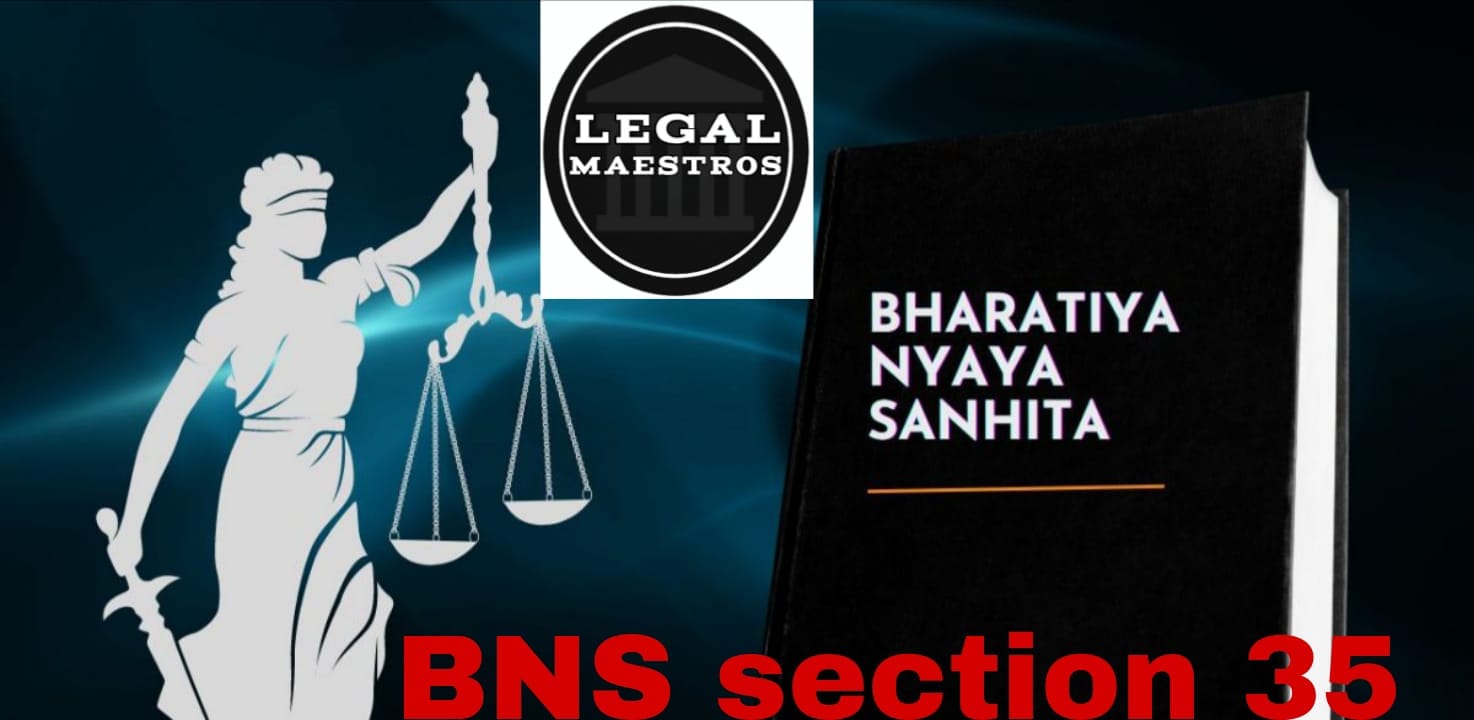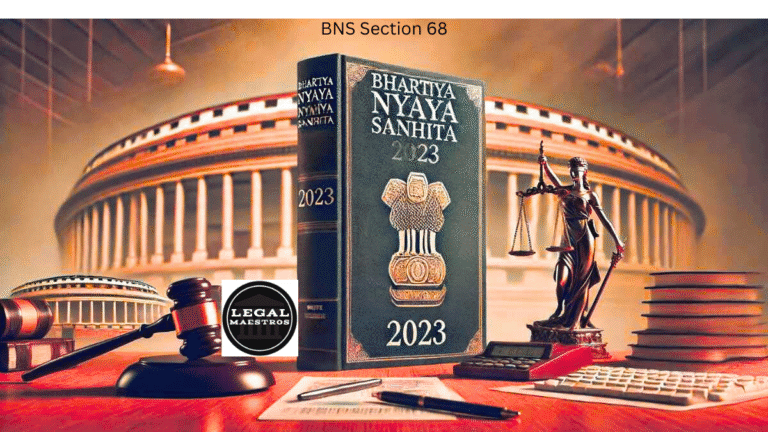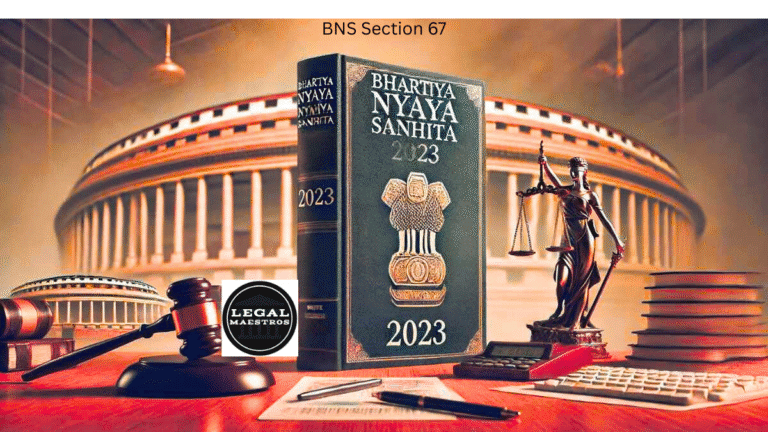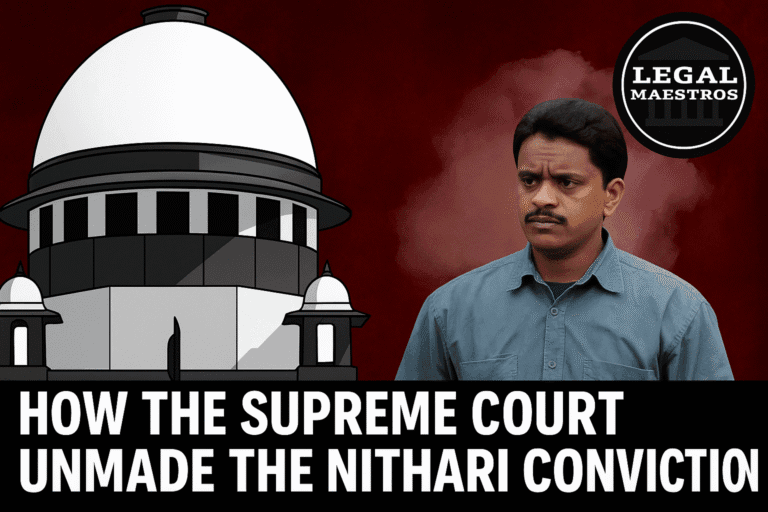
Section 35 of the Bharatiya Nyaya Sanhita, 2023: The Right of Private Defence
The Bharatiya Nyaya Sanhita (BNS) of 2023, which took the place of the Indian Penal Code, includes a number of provisions that are intended to bring India’s criminal legislation into relevance with modern standards. There is Section 35, which addresses the right of persons to protect themselves and their property from certain offenses. This section is one of the provisions that is included in this. The purpose of this provision is to clarify the circumstances in which defensive measures of this kind are not regarded to be breaches of the law.
In accordance with Section 35,
Every individual possesses the right to defend themselves, with the exception of the limitations that are outlined in section 37.
(a) his own body, as well as the body of any other individual, against each and every offense that is committed against the human body;
For any queries or to publish an article or post or advertisement on our platform, do call at +91 6377460764 or email us at contact@legalmaestros.com.
(b) the property, whether mobile or immovable, of oneself or of any other person, against any act which is an offence coming under the description of theft, robbery, mischief or criminal trespass, or which is an attempt to commit theft, robbery, mischief or criminal trespass.
It is the responsibility of this provision to ensure that individuals are not held criminally accountable for actions performed in self-defense, provided that those activities fall within the legal parameters that have been specified for such defends.
Acquiring an Understanding of the Right to Private Defense.
Individuals have the ability to protect themselves, others, or their property from danger whenever they use their right to private defense. On the other hand, this privilege is not unrestricted and is subject to a number of rules and regulations:
For any queries or to publish an article or post or advertisement on our platform, do call at +91 6377460764 or email us at contact@legalmaestros.com.
The threat must be both immediate and actual in order to be considered a reasonable apprehension.
The use of force in defense must be proportionate to the threat that is being confronted. This principle is known as proportionality.
Necessity: The action must be required in order to prevent the threat from occurring.
As an illustration, if a person is attacked and is terrified for their life, they might resort to the use of force that is required to protect themselves. On the other hand, if the threat has diminished or if an excessive amount of force is employed, the act might not be protected by this privilege.
For any queries or to publish an article or post or advertisement on our platform, do call at +91 6377460764 or email us at contact@legalmaestros.com.
Examples to Illustrate the Point
Defending Oneself Against Robbery is the First Example!
During the late hours of the night, Rahul is heading home when he is abruptly confronted by a stranger who is attempting to steal his wallet. To defend himself and his property, Rahul pushes the man away and then races to a local police station to report the event. He does this in an effort to protect himself and his property. Rahul’s actions are justified in accordance with Section 35 of the Bharatiya Nyaya Sanhita, 2023, because he was defending his own body and property against an offense that affected the human body.
Example 2: Offering Protection to Another Individual
For any queries or to publish an article or post or advertisement on our platform, do call at +91 6377460764 or email us at contact@legalmaestros.com.
Priya is at the residence of her friend when she becomes aware of an unknown somebody attempting to burst through a window and enter the house. The intruder is frightened away by Priya, who promptly contacts the police and then uses a stick to scare him away. Before the cops arrive, the intruder makes a break for it. As Priya was defending the property of another individual from criminal trespass, her acts are protected under Section 35 of the Bharatiya Nyaya Sanhita, 2023. This is because she was defending the property.
In accordance with the provisions of Section 37 of the
Section 37 describes the restrictions of the right to private defense, while Section 35 guarantees the right to private defense.
Those acts that do not reasonably create the fear of death or serious injury are not subject to the protection of this right.
For any queries or to publish an article or post or advertisement on our platform, do call at +91 6377460764 or email us at contact@legalmaestros.com.
In situations where there is adequate time to seek protection from public authorities, it is not possible to use this right.
- The amount of force that is employed must not be greater than what is required for defense . Through the implementation of these rules, the right to private defense is protected from abuse and is utilized in a responsible manner. Citizens who are members of the Complaint Hub Community
Beed Windmill Incident is a Real-World Example of Their Application
During the month of May in the year 2025, a group of armed robbers attacked a security guard by the name of Roopsingh Tak who was working at a windmill facility in the Beed district of Maharashtra area. In retaliation, he discharged his legitimate pistol, which ultimately led to the murder of one of the assailants. Under Section 105 of the BNS, Tak was arrested for culpable homicide that did not amount to murder, despite the fact that he claimed that he was acting in self-defense of himself. Considering that the law allows for self-defense but scrutinizes the amount of force that is used, this case brought to light the significance of proportionality in the context of self-defense claims. The number 20
The legal protection that is granted to those who are acting in private defense is highlighted in Section 35 of the Bharatiya Nyaya Sanhita, which was completed in 2023. In spite of the fact that the law acknowledges the right to protect oneself, others, or property, it stipulates that any acts taken in this regard must be reasonable, necessary, and appropriate to the difficulty of the situation. When individuals have a thorough understanding of these nuances, they are able to exercise their rights without exceeding the limitations of the court system.
For any queries or to publish an article or post or advertisement on our platform, do call at +91 6377460764 or email us at contact@legalmaestros.com.







![Research Assistantship @ Sahibnoor Singh Sindhu, [Remote; Stipend of Rs. 7.5k; Dec 2025 & Jan 2026]: Apply by Nov 14, 2025!](https://legalmaestros.com/wp-content/uploads/2025/11/Gemini_Generated_Image_s0k4u6s0k4u6s0k4-768x707.png)
![Karanjawala & Co Hiring Freshers for Legal Counsel [Immediate Joining; Full Time Position in Delhi]: Apply Now!](https://legalmaestros.com/wp-content/uploads/2025/11/Gemini_Generated_Image_52f8mg52f8mg52f8-768x711.png)